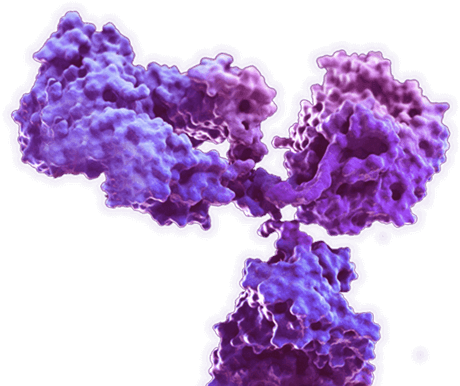AibGenesis™ Mouse Anti-ATG10 Antibody (CBMOAB-24499FYC)
Cat: CBMOAB-24499FYC

Certificate of Analysis Lookup
To download a Certificate of Analysis, please enter a lot number in the search box below. Note: Certificate of Analysis not available for kit components.
Lot Number
To download a Certificate of Analysis, please enter a lot number in the search box below. Note: Certificate of Analysis not available for kit components.
Lot Number
- Product List
- Specifications
- Application Information
- Target
- Reference
| Sub Cat | Clonality | Species Reactivity | Application | Clone | Conjugate | Size | |
| CBMOAB-24499FYC | Monoclonal | A. thaliana (Arabidopsis thaliana), C. elegans (Caenorhabditis elegans), Cattle (Bos taurus), Chimpanzee (Pan troglodytes), Fruit fly (Drosophila melanogaster), Horse (Equus caballus), Maize (Zea mays), Pig (Sus scrofa), Rat (Rattus norvegicus), Yeast, Zebrafish (Danio rerio) | WB, ELISA | MO24499FC | 100 µg | ||
| CBMOAB-01983FYA | Monoclonal | Fruit fly (Drosophila melanogaster) | WB, ELISA | MO01983FYA | 100 µg | ||
| CBMOAB-66900FYA | Monoclonal | Zebrafish (Danio rerio) | WB, ELISA | MO66900FYA | 100 µg | ||
| CBMOAB-00367CR | Monoclonal | Yeast | WB, ELISA | MO00367CR | 100 µg | ||
| CBMOAB-00740HCB | Monoclonal | C. elegans (Caenorhabditis elegans) | WB, ELISA | MO00740HB | 100 µg | ||
| MO-AB-15789W | Monoclonal | Chimpanzee (Pan troglodytes) | WB, ELISA | MO15789W | 100 µg | ||
| MO-AB-43751W | Monoclonal | Horse (Equus caballus) | WB, ELISA | MO43751W | 100 µg | ||
| MO-AB-47411W | Monoclonal | Maize (Zea mays) | WB, ELISA | MO47411W | 100 µg | ||
| MO-AB-07745R | Monoclonal | Cattle (Bos taurus) | WB, ELISA | MO07745R | 100 µg | ||
| MO-AB-23905R | Monoclonal | Pig (Sus scrofa) | WB, ELISA | MO23905R | 100 µg | ||
| MO-AB-24213H | Monoclonal | Rat (Rattus norvegicus) | WB, ELISA | MO24213C | 100 µg |
Specifications
| Host species | Mouse (Mus musculus) |
| Species Reactivity | A. thaliana (Arabidopsis thaliana), C. elegans (Caenorhabditis elegans), Cattle (Bos taurus), Chimpanzee (Pan troglodytes), Fruit fly (Drosophila melanogaster), Horse (Equus caballus), Maize (Zea mays), Pig (Sus scrofa), Rat (Rattus norvegicus), Yeast, Zebrafish (Danio rerio) |
| Clone | MO24499FC |
| Specificity | This antibody binds to Arabidopsis ATG10. |
| Format | Liquid or Lyophilized |
| Storage | Store at 4°C: short-term (1-2weeks) Store at -20°C: long-term and future use |
| Purity | > 90% was determined by SDS-PAGE |
| Purification | Purified with Protein A or G affinity chromatography |
Application Information
| Application | WB, ELISA |
| Application Notes | ELISA: 1:1000-1:3000 Other applications are to be developed. The optimal dilution should be determined by the end user. |
Target
| Product Overview | Mouse Anti-Arabidopsis ATG10 Antibody is a mouse antibody against ATG10. It can be used for ATG10 detection in Western Blot, Enzyme-Linked Immunosorbent Assay. |
| Alternative Names | Autophagy Related 10; Autophagy-Related Protein 10; APG10L; ATG10 Autophagy Related 10 Homolog (S. Cerevisiae); APG10 Autophagy 10-Like (S. Cerevisiae); Ubiquitin-Like-Conjugating Enzyme ATG10; ATG10 Autophagy Related 10 Homolog |
| UniProt ID | Q8VZ52 |
| Protein Refseq | The length of the protein is 225 amino acids long. The sequence is show below: MDSAREVSDGRLTVEGFSVASRAFADKWKIHNQSFPPWSWVPLINRTLLVSKKEEGYLSLEKIIILSSLEEEIPEDESLNVATDCLEKEETVDHTILVPTMENEAHYYDFHIVYSASYKVPVLYFRGYCSGGEPLALDVIKKDVPSCSVSLLLESKWTFITQEEHPYLNRPWFKLHPCGTEDWIKLLSQSSSSSGCQMPIVLYLVSWFSVVGQVVGLRIPLEMLN. |
Reference
| Reference | 1. Phillips, A. R., Suttangkakul, A., & Vierstra, R. D. (2008). The ATG12-conjugating enzyme ATG10 is essential for autophagic vesicle formation in Arabidopsis thaliana. Genetics, 178(3), 1339-1353. 2. Avin-Wittenberg, T., Honig, A., & Galili, G. (2012). Variations on a theme: plant autophagy in comparison to yeast and mammals. Protoplasma, 249, 285-299. 3. Avin-Wittenberg, T., Honig, A., & Galili, G. (2012). Variations on a theme: plant autophagy in comparison to yeast and mammals. Protoplasma, 249, 285-299. |
For Research Use Only | Not For Clinical Use.
Online Inquiry

